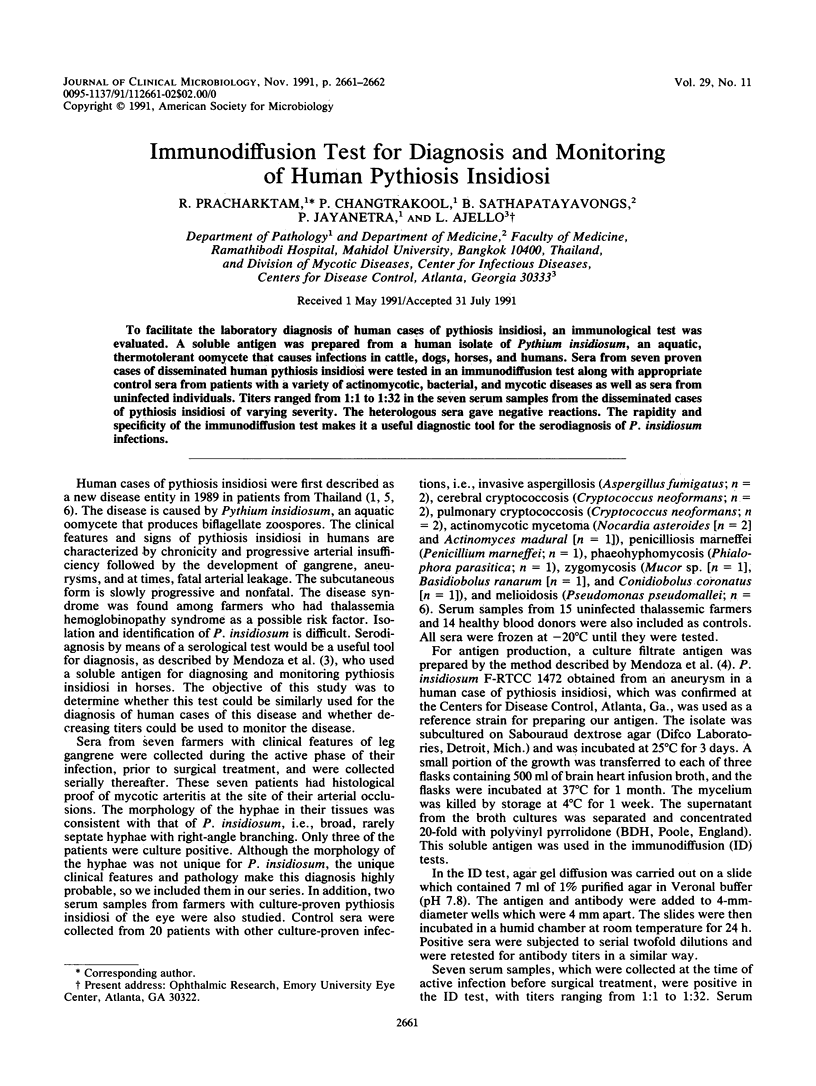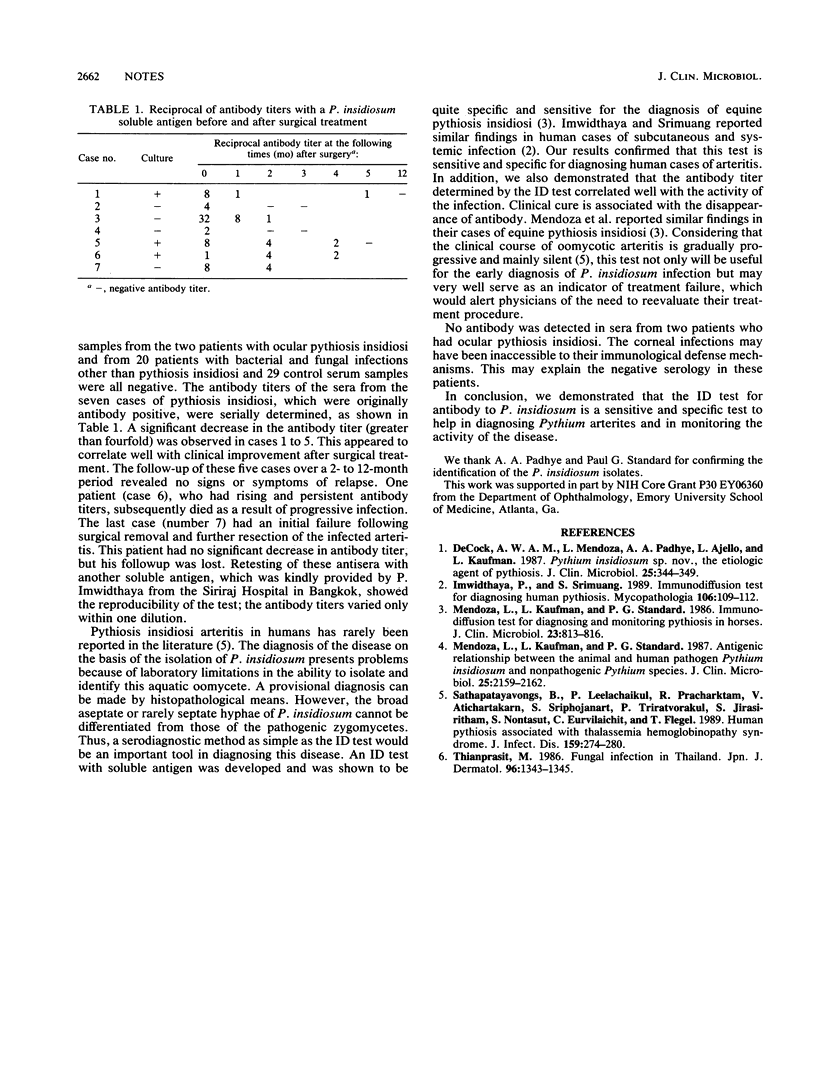Abstract
To facilitate the laboratory diagnosis of human cases of pythiosis insidiosi, an immunological test was evaluated. A soluble antigen was prepared from a human isolate of Pythium insidiosum, an aquatic, thermotolerant oomycete that causes infections in cattle, dogs, horses, and humans. Sera from seven proven cases of disseminated human pythiosis insidiosi were tested in an immunodiffusion test along with appropriate control sera from patients with a variety of actinomycotic, bacterial, and mycotic diseases as well as sera from uninfected individuals. Titers ranged from 1:1 to 1:32 in the seven serum samples from the disseminated cases of pythiosis insidiosi of varying severity. The heterologous sera gave negative reactions. The rapidity and specificity of the immunodiffusion test makes it a useful diagnostic tool for the serodiagnosis of P. insidiosum infections.
Full text
PDF

Selected References
These references are in PubMed. This may not be the complete list of references from this article.
- De Cock A. W., Mendoza L., Padhye A. A., Ajello L., Kaufman L. Pythium insidiosum sp. nov., the etiologic agent of pythiosis. J Clin Microbiol. 1987 Feb;25(2):344–349. doi: 10.1128/jcm.25.2.344-349.1987. [DOI] [PMC free article] [PubMed] [Google Scholar]
- Imwidthaya P., Srimuang S. Immunodiffusion test for diagnosing human pythiosis. Mycopathologia. 1989 May;106(2):109–112. doi: 10.1007/BF00437089. [DOI] [PubMed] [Google Scholar]
- Mendoza L., Kaufman L., Standard P. G. Immunodiffusion test for diagnosing and monitoring pythiosis in horses. J Clin Microbiol. 1986 May;23(5):813–816. doi: 10.1128/jcm.23.5.813-816.1986. [DOI] [PMC free article] [PubMed] [Google Scholar]
- Mendoza L., Kaufman L., Standard P. Antigenic relationship between the animal and human pathogen Pythium insidiosum and nonpathogenic Pythium species. J Clin Microbiol. 1987 Nov;25(11):2159–2162. doi: 10.1128/jcm.25.11.2159-2162.1987. [DOI] [PMC free article] [PubMed] [Google Scholar]
- Sathapatayavongs B., Leelachaikul P., Prachaktam R., Atichartakarn V., Sriphojanart S., Trairatvorakul P., Jirasiritham S., Nontasut S., Eurvilaichit C., Flegel T. Human pythiosis associated with thalassemia hemoglobinopathy syndrome. J Infect Dis. 1989 Feb;159(2):274–280. doi: 10.1093/infdis/159.2.274. [DOI] [PubMed] [Google Scholar]


